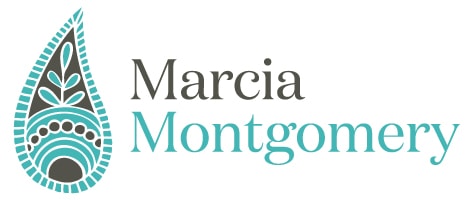Benefits of Massage Therapy
History of Massage
Massage is perhaps one of the oldest healing traditions. Many ancient peoples – including the Ancient Greeks, Egyptians, Chinese and Indians – were convinced of the therapeutic properties of massage and used it to treat a variety of ailments.
Massage therapy (including myotherapy) is the practice of kneading or manipulating a person’s muscles and other soft-tissue in order to improve their wellbeing or health. It is a form of manual therapy that includes holding, moving, and applying pressure to the muscles, tendons, ligaments and fascia.
The term ‘massage therapy’ is used to describe a wide variety of techniques that vary in the manner in which touch, pressure and the intensity of the treatment is applied.
Massage is generally considered part of complementary and integrative medicine. It's increasingly being offered along with standard treatment for a wide range of medical conditions and situations.
Massage and stress management
Studies of the benefits of massage demonstrate that it is an effective treatment for reducing stress, pain and muscle tension.
While more research is needed to confirm the benefits of massage, some studies have found massage may also be helpful for:
- Anxiety
- Digestive disorders
- Fibromyalgia
- Headaches
- Insomnia related to stress
- Myofascial pain syndrome
- Soft tissue strains or injuries
- Sports injuries
- Temporomandibular joint pain
Beyond the benefits for specific conditions or diseases, some people enjoy massage because it often produces feelings of caring, comfort and connection.
Understanding the benefits
One of the immediate benefits of massage therapy is a feeling of deep relaxation and calm. This occurs because massage prompts the release of endorphins – the brain chemicals (neurotransmitters) that produce feelings of wellbeing.
Levels of stress hormones, such as adrenalin, cortisol and norepinephrine, are also reduced. Studies indicate that high levels of stress hormones impair the immune system.
Some of the physical benefits of massage and myotherapy include:
- reduced muscle tension
- improved circulation
- stimulation of the lymphatic system
- reduction of stress hormones
- relaxation
- increased joint mobility and flexibility
- improved skin tone
- improved recovery of soft tissue injuries
- heightened mental alertness
- reduced anxiety and depression.
Massage - special considerations
There are some instances where massage may not be recommended, please consult your GP or specialist for more information:
- during pregnancy
- if skin rashes, burns, cuts or infections are present
- if fractures or broken bones are suspected
- if the person has a life threatening illness.
- if the person has a blood clot, deep vein thrombosis
- If the person has a bleeding disorder or thrombocytopenia
Discuss the pros and cons of massage with your doctor, especially if you are pregnant or you have cancer or unexplained pain.
Some forms of massage can leave you feeling a bit sore the next day. But massage shouldn't ordinarily be painful or uncomfortable. If any part of your massage doesn't feel right or is painful, let your practitioner know right away.
Book a Massage Today
View the next available appointment times and book online today.
References
- Stress effects on the body. American Psychological Association. https://www.apa.org/topics/stress-body
- Massage therapy for health purposes: What you need to know. National Center for Complementary and Integrative Health. https://nccih.nih.gov/health/massage/massageintroduction.htm. Accessed Nov. 4, 2015.
- Types of massage. The American Massage Therapy Association. https://www.amtamassage.org/findamassage/massage_type.html. Accessed Nov. 4, 2015.
- AskMayoExpert. Massage therapy. Rochester, Minn.: Mayo Foundation for Medical Education and Research; 2015.
- Agency for Healthcare Research and Quality. Noninvasive Treatments for Low Back Pain. AHRQ Publication No. 16-EHC004-EF. February 2016.
- Bennett C, Underdown A, Barlow J. Massage for promoting mental and physical health in typically developing infants under the age of six months. Cochrane Database of Systematic Reviews. 2013;(4):CD005038. Accessed at http://www.cochranelibrary.com(link is external) on January 21, 2017.
- Cortés Godoy V, Gallego Izquierdo T, Lázaro Navas I, et al. Effectiveness of massage therapy as co-adjuvant treatment to exercise in osteoarthritis of the knee: a randomized controlled trial. Journal of Back and Musculoskeletal Rehabilitation. 2014;27(4):521-529.
- Furlan AD, Giraldo M, Baskwill A, et al. Massage for low-back pain. Cochrane Database of Systematic Reviews. 2015;(9):CD001929. Accessed at www.cochranelibrary.com(link is external) on January 26, 2017.
- Understanding chronic stress effects on health. American Psychological Association. https://www.apa.org/topics/stress-health
